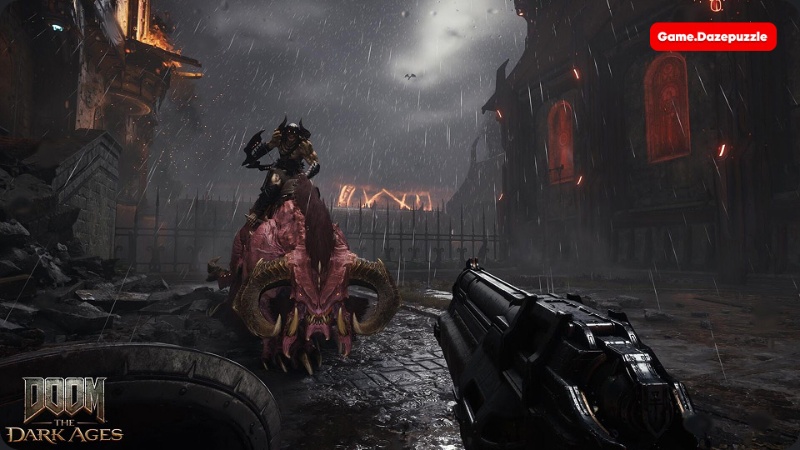1. The Modern AI Gold Rush & The Hidden Bottleneck
The race is on. Artificial Intelligence, particularly large language models (LLMs), isn’t just the future; it’s the driving force reshaping industries right now. Businesses are scrambling to develop, train, and deploy ever-more sophisticated AI models to gain a competitive edge, automate processes, and unlock unprecedented insights. This explosive demand has ignited a massive surge in the need for raw computational power.
At the heart of this revolution lies the Graphics Processing Unit (GPU). Modern AI models, with their billions of parameters, rely almost entirely on the parallel processing muscle of high-performance GPUs like NVIDIA’s H100, H200, A100, and even the powerful RTX 4090 for specific workloads. These chips are the engines powering the training of complex models and the rapid inference needed for real-time AI applications.
However, simply acquiring these powerful GPUs isn’t the finish line; it’s often just the start of a new, complex challenge. While the raw computational power of an H100 or A100 is undeniable, harnessing it effectively across multiple GPUs, often in diverse clusters mixing different generations (H100s alongside A100s or even 4090s for specialized tasks), introduces a hidden bottleneck. The emerging challenge isn’t just having the power; it’s managing it efficiently and ensuring rock-solid stability. Without addressing this, your cutting-edge AI ambitions can quickly stall.
2. Doom in the Data Center: When GPU Driver Errors Strike
If you’ve spent hours, days, or even weeks training a critical LLM only to see it crash spectacularly with a cryptic GPU driver error, you know the feeling of utter despair. This is the “doom” moment. It’s not just an inconvenience; it’s a crippling blow to productivity and progress. GPU driver errors and system instability bring AI workflows to a grinding halt, leading to:
- Job Crashes: Training runs fail midway, wasting precious compute time and energy.
- Lost Time: Engineers scramble to diagnose the issue, restart jobs, and hope it doesn’t happen again.
- Wasted Resources: Expensive GPU cycles are consumed without producing results.
- Missed Deadlines: Project timelines slip, impacting product launches and business opportunities.
Managing GPU drivers across a diverse, multi-GPU cluster is notoriously difficult. Different GPU models (H100 vs. A100 vs. RTX 4090) often require specific driver versions or have subtle compatibility nuances with different CUDA libraries or deep learning frameworks. Mixing generations in a single cluster amplifies this complexity exponentially. Ensuring the right driver is loaded for the right task on the right GPU, without conflicts, becomes a high-wire act.
This constant battle against instability feels like a regression – a step backwards into a frustrating “Dark Age” of computing. Instead of focusing on innovation and model development, precious engineering resources are consumed by firefighting infrastructure gremlins. Your state-of-the-art H100 cluster starts to feel less like a supercomputer and more like a temperamental relic.
The financial impact is equally severe, though often hidden. Downtime caused by crashes and the time spent debugging means your expensive GPUs aren’t doing productive work. Furthermore, inefficient scheduling often leads to significant underutilization – GPUs sitting idle while others are overloaded. This downtime and underutilization directly inflate your cloud computing costs, turning your powerful GPU investment into a financial drain.
3. Beyond Panic: Strategies for GPU Stability & Efficiency
So, what can be done? The first step is moving beyond reactive panic towards proactive management. Best practices include:
- Proactive Driver Management: Rigorous testing and standardization of driver versions across compatible hardware subsets.
- Environment Isolation: Using containers (like Docker) or virtual environments to encapsulate workloads with their specific dependencies, preventing conflicts.
- Comprehensive Monitoring: Implementing tools to track GPU health, utilization, temperature, and error logs.
While these are essential foundations, they quickly hit limitations at scale, especially in complex, heterogeneous environments. Manually managing drivers and environments across dozens or hundreds of GPUs, especially mixed types, becomes a full-time job prone to human error. Basic orchestration tools often lack the deep intelligence needed to optimally schedule diverse AI workloads onto the most suitable GPUs while preventing conflicts.
The need is clear: AI enterprises require intelligent resource optimization specifically designed for the complexities of modern, heterogeneous AI GPU clusters. They need a solution that automates stability and maximizes efficiency at scale, freeing engineers to focus on AI, not infrastructure plumbing.
4. Enter WhaleFlux: Your AI Infrastructure Stability & Efficiency Platform
This is where WhaleFlux comes in. WhaleFlux is not just another management tool; it’s an intelligent GPU resource management platform purpose-built for AI enterprises. It tackles the core challenges of stability and efficiency head-on, transforming your GPU infrastructure from a source of frustration into a reliable, high-performance engine for AI innovation.
Core Value Prop 1: Banishing the “Dark Ages” of Instability:
Remember that feeling of “doom” from driver errors? WhaleFlux proactively banishes it. It intelligently manages and isolates software environments at a granular level. By automatically ensuring workloads run with their exact required dependencies (drivers, CUDA, libraries) in conflict-free environments, WhaleFlux drastically reduces GPU driver errors and system crashes. This means consistent, reliable execution for your most critical LLM training jobs and production deployments. No more wasted weeks, no more mysterious crashes. Stability becomes the default, letting you leave the dark ages behind.
Core Value Prop 2: Unlocking Peak Efficiency & Cost Savings:
WhaleFlux goes beyond stability to supercharge your GPU utilization. Its intelligent scheduling and advanced bin-packing algorithms analyze your workloads and your entire GPU fleet – whether it’s H100s for heavy training, H200s for large-memory models, A100s for versatile tasks, or RTX 4090s for specific inferencing – and allocate resources optimally. It packs jobs efficiently onto GPUs, minimizing idle time and ensuring maximum throughput. This directly translates into significant reductions in cloud compute costs – often 30% or more. By getting the most out of every GPU cycle you pay for, whether owned or rented, WhaleFlux dramatically improves your ROI. Furthermore, efficient allocation means getting the right resources (e.g., H100 power vs. A100 availability) to the right job faster, accelerating model deployment from development to production.
Core Value Prop 3: Simplified Management:
WhaleFlux provides a centralized control panel, giving you a single pane of glass to view and manage your diverse GPU resources. See utilization, health, and job status across your entire cluster instantly. Streamlined provisioning means spinning up environments for new projects or researchers takes minutes, not days. Comprehensive monitoring is built-in, alerting you to potential issues before they cause downtime. WhaleFlux removes the operational overhead, making complex GPU infrastructure feel simple and manageable.
5. The WhaleFlux Advantage: Power Meets Flexibility
WhaleFlux is designed for the real world of AI infrastructure, offering unparalleled power combined with practical flexibility:
Supported Hardware:
WhaleFlux excels in heterogeneous environments. Seamlessly manage mixed clusters incorporating the latest NVIDIA H100 and H200 GPUs, powerful A100s, and cost-effective RTX 4090s for specific workloads. WhaleFlux intelligently understands and leverages the capabilities of each GPU type.
Flexible Acquisition:
WhaleFlux helps you optimize costs regardless of your infrastructure strategy. Purchase dedicated hardware for maximum control over your highest-priority workloads? WhaleFlux maximizes its utilization. Prefer to rent GPU capacity for flexibility or specific projects? WhaleFlux efficiently manages rented resources (NVIDIA H100, H200, A100, RTX 4090) alongside owned ones. (Note: WhaleFlux rentals require a minimum commitment of one month, ensuring stability and cost predictability for both you and our infrastructure, rather than volatile hourly billing). WhaleFlux ensures you get the maximum ROI from your chosen mix of owned and rented infrastructure.
The Outcome:
The WhaleFlux advantage delivers tangible results: Faster time-to-value for your AI models as deployments accelerate. Predictable costs through reduced waste and optimized utilization. Rock-solid stability that eliminates the “doom” of driver errors and crashes. This combination empowers your AI teams to innovate faster and more reliably.
6. Stepping Out of the Shadows: The Future of AI Infrastructure
The era of struggling with GPU driver errors, inefficient clusters, and ballooning cloud costs is ending. The “Dark Ages” of AI infrastructure, characterized by instability and wasted resources, are giving way to a new era of intelligent management and optimized performance.
WhaleFlux is at the forefront of this shift. It’s more than just a tool; it’s the platform enabling AI enterprises to achieve reliable, cost-effective, and high-performance deployment of LLMs and other demanding AI workloads. By automating stability, maximizing efficiency, and simplifying management across diverse GPU fleets (including H100, H200, A100, and RTX 4090), WhaleFlux unlocks the true potential of your AI investments.
Stop letting driver errors “doom” your productivity and budget. Step out of the shadows of infrastructure complexity and into the light of optimized AI performance.
- Learn how WhaleFlux can specifically optimize your mix of NVIDIA H100, H200, A100, or RTX 4090 resources.
- Explore flexible rental options (minimum 1 month) or see how WhaleFlux maximizes ROI on purchased hardware.
FAQs
1. What are the most common GPU driver errors when running AI workloads on NVIDIA GPUs?
The most frequent issues include CUDA version conflicts, driver compatibility problems between different NVIDIA GPU models (like mixing RTX 4090 with H100), and memory allocation failures during large language model training sessions.
2. How can I prevent driver conflicts when using multiple NVIDIA GPU models together?
WhaleFlux eliminates this challenge by providing pre-configured, optimized driver stacks for all supported NVIDIA GPUs – from RTX 4090 to H200. Our platform automatically manages driver compatibility across your entire cluster, ensuring stable operation regardless of your GPU mix.
3. Why do CUDA errors frequently occur during AI model training?
CUDA errors often stem from driver version mismatches, insufficient VRAM, or incompatible library versions. WhaleFlux maintains a standardized software environment across all NVIDIA GPUs in our clusters, dramatically reducing CUDA-related failures and ensuring consistent AI training performance.
4. How can I optimize my AI infrastructure to avoid GPU driver instability?
By leveraging WhaleFlux‘s managed NVIDIA GPU clusters. We handle all driver optimization, firmware updates, and compatibility testing across our full NVIDIA stack – including H100, H200, A100, and RTX 4090 – allowing your team to focus on AI development rather than infrastructure troubleshooting.
5. What’s the advantage of using WhaleFlux versus managing NVIDIA GPUs in-house?
WhaleFlux provides enterprise-grade stability through our optimized driver management and cluster orchestration. Instead of battling driver errors and compatibility issues, you get reliable access to NVIDIA’s latest GPUs through monthly rental plans, with our platform ensuring maximum uptime and performance for your AI workloads.

